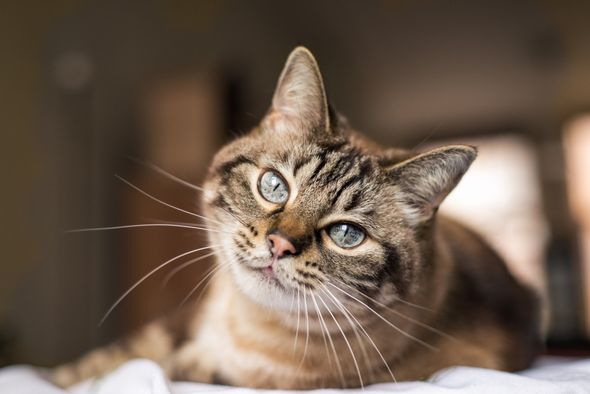Plates and screws
How we repair broken bones ?
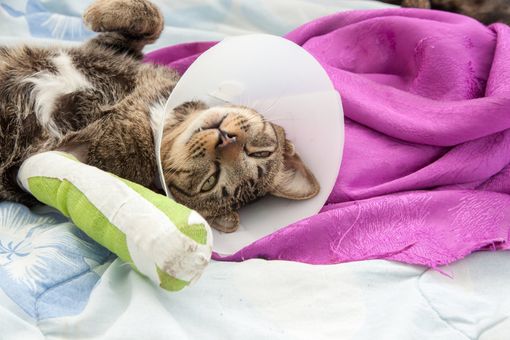
The science behind how we deal with broken bones has changed immensely since I left university, and to be honest, has changed immensely in just the last few years.
Technology has altered how implants are produced with 3D printing now possible, and a plate can be designed on computer and produced incredibly quickly.
Not only that , but materials can now be produced with resistance to bacteria built in.
AO is a worldwide organisation focused on getting the very best results for humans, and then divisions have developed to focus on particular areas of us humans, and then for the last 50 years a division provides guidance for Veterinary Surgeons with the latest techniques, critically evaluated, to provide 'best practice' guidance, and courses hosted by expert surgeons from all over the world, passing on their knowledge and improving our skills.
The guidelines used to be that we should literally piece the bone back together,
fragment by fragment but this would damage the tissues around the bone immensely.
We know that we need to balance the needs of the bone, and the needs of the tissues - muscles, tendons, nerves and blood vessels. They are all essential to healing.
So now we may not look to assemble the jigsaw, but just make sure we sort out the major pieces of the jigsaw - the corners, the length, the width, and then provide the best environment for the body to heal the bone.
An example of we might now deal with a case is this dreadful break in a young adult cat.
If you take a look at this truly awful break, the shin bone, or tibia. is in multiple piece. This is not a jigsaw that we can put back together.
We have to look at an alternative way of dealing with this break, which in years gone by, and quite possible even now, might be viewed by some as justifying amputation.
A pin was used to line up the main sections, and ensure that the knee lined up with the hip above, and the hock, or ankle, below.
The pin is about 2mm wide and can be used to thread down the bone without disturbing the region with the break.
New technology has produced plate designs whereby the screw locks into the bone, and into the plate so creating a secure scaffold.
The top couple of inches of shin bine were held pretty securely by this, but just to try & ensure we could avoid complications, an additional plate was added at right angles to provide a more secure repair.
Following repair, this chap then needed to rest up for several weeks whilst his body then completed the job of healing the re-assembled shin bone.
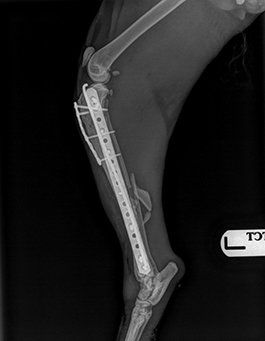
Slide title
Write your caption hereButton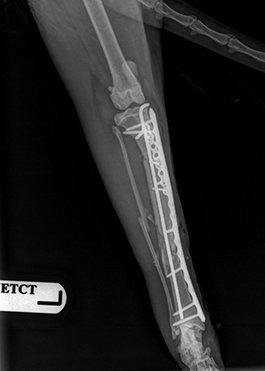
Slide title
Write your caption hereButton
He broken his radius in his foreleg. The break was severe , but not as dramatic as the cat shown above.
The plate was pushed in from the top, and then pulled towards the wrist before being secured. The actual broken section was not touched at all, leaving all of the body's own resources in situ and ready to start the healing process.
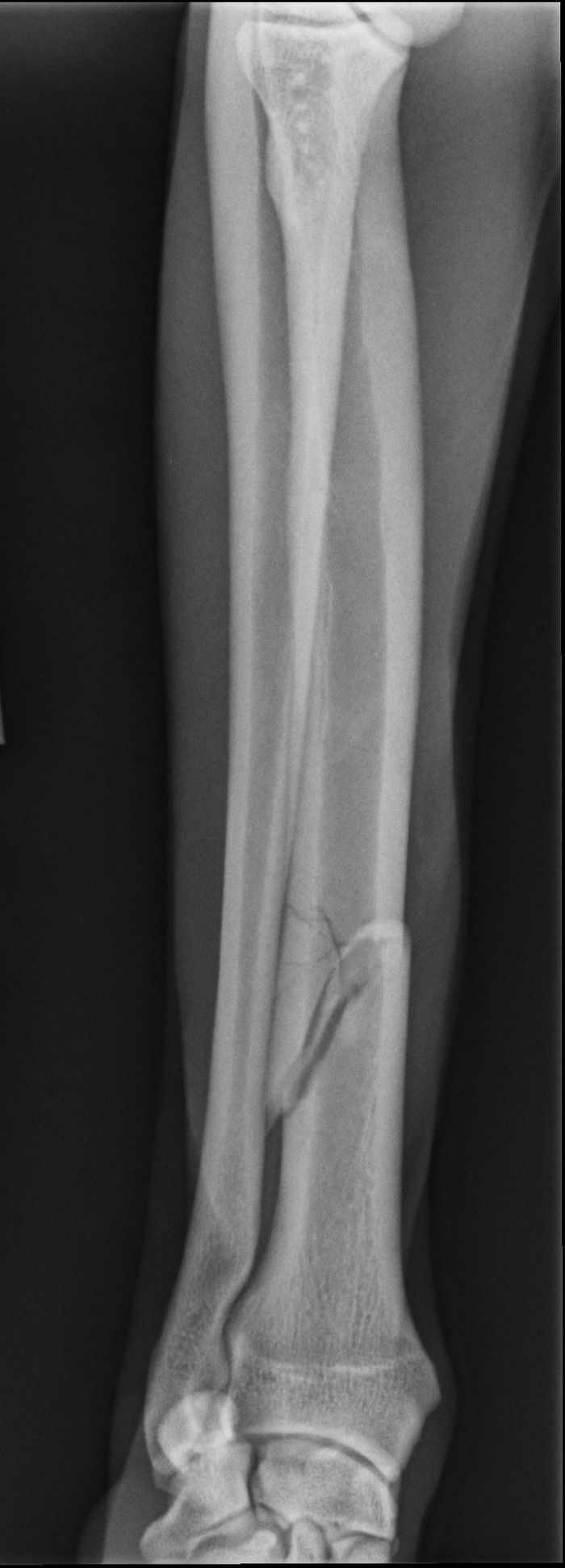
Slide title
Write your caption hereButton
Slide title
Write your caption hereButton



